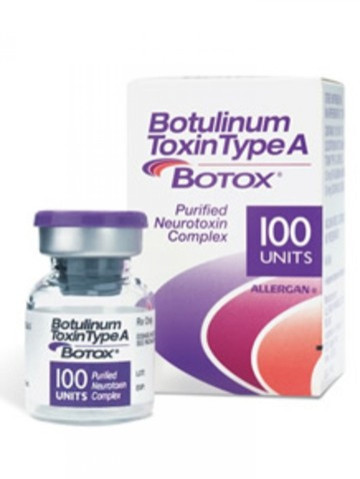Botox Can Treat Urinary Incontinence, Research Suggests

New research suggests that using Botox can help to treat urinary incontinence in adults diagnosed with multiple sclerosis or spinal cord injury.
According to an announcement made by parent company Allergan, Botox was approved by the Irish Medicines Board for treating uncontrolled urinary leaking, or incontinence, in Europe. This green light marks the first step towards securing national licenses for the treatment in 14 European countries authorized under the Mutual Recognition Procedure and possibly even in the U.S.
"We are pleased that Botox has received a positive opinion following the Mutual Recognition Procedure for the treatment of urinary incontinence in people living with multiple sclerosis or spinal cord injury," Douglas Ingram, CEO of European Allergan, said in a press release.
Nearly 80 percent of people with multiple sclerosis (MS) and spinal cord injury (SCI) experience urinary incontinence stemming from a condition called neurogenic detrusor over activity (NDO). This disorder acquired from MS or SCI causes involuntary contractions of the bladder during a rest period while filling, leading to incontinence.
Botox, introduced to the market in 2002 to hide treat the appearance of wrinkles, is chemically made up of a toxin called botulinum toxin that blocks nerve signals. Among this new finding for treating urinary incontinence in NDO, Botox is approved for treating migraines, excessive sweating, painful spasms and eye muscle disorders.
A single injection of 200-300 units of Botox was given to half of the 700 patients with either MS or SCI during the trial period while the other half received a placebo during a clinical trial called the DIGNITY program (Double-blind InvestiGation of purified Neurotoxin complex In neurogenic deTrusor over activitY). The Botox injection in the bladder reduced involuntary contractions and increased bladder activity and capacity, bringing urinary incontinence to a halt.
The single injection provided relief urinary incontinence within 2 weeks of the initial treatment and continued to remain effective 8-10 months after in some case, according to Allergan. This new method of treatment using Botox provides an alternative to taking anticholinergic medications used to control urinary leakage.
"For many people with spinal cord injury or multiple sclerosis, gaining effective control over their bladder and staying dry can be a significant step towards improving daily functioning and overall quality of life," Ingram said. Nearly 40 percent of those treated did not experience any symptoms of incontinence and saw "improvements in quality of life, including less avoidance behavior, less psychosocial impact and less embarrassment," according to the research.
Allergan, based in the U.S., said it is expanding its reach to other health regulatory agencies around the world to provide awareness about the effects of Botox on urinary incontinence stemmed from neurogenic detrusor over activity.
"Our task now is to work closely with the national health authorities to secure the relevant national licenses so that we can bring this valuable treatment option to patients, as quickly as possible," Ingram said.
An endorsement of using Botox for treating the 80 percent of people experiencing urinary leakage from to estimated 400,000 Americans with MS or 250,000 people in the U.S. with spinal cord injuries.
Allergan is making moves to get Botox on to the market in Europe for treating urinary incontinence along with global agencies.
© Copyright IBTimes 2024. All rights reserved.






















